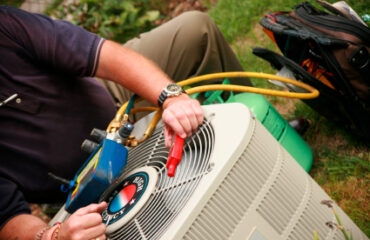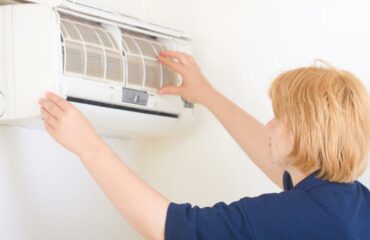
A leaking air duct is burdensome to many homeowners. It is so because leaking ducts can cause temperature issues. Plus, an HVAC repair is typically pricey. On the bright side, air duct leaks can easily be found and fixed. Once you gain access to the HVAC ducts, you can even repair the leaks yourself.
Step 1 – Inspect the Air Ducts
Looking for leaks can be time consuming, but you can speed it up and make the examination more accurate with the help of some useful tools. For one, you can use a duct leakage detector to indicate where the leaks are or tell any changes in pressure.
To check for air leaks, turn system’s thermostat fan on. Feel along the duct’s joints for any loose connections or leaks. Some ducts that are flexible can tear over time or become unfastened, so make sure to go through all your HVAC’s air ducts.
Step 2 – Fix Loose Flex Connections
If the flexible duct has entirely fallen off, remove the Panduit strip. This is the plastic zip tie that holds the inside of the flex tube in place. Next, pull back the duct’s outer layer, as well as its insulation to reveal about 12 inches of its inner layer. You should be able to place the inner layer into the boot connection. Set it in place with duct tape.
Once that’s done, you can attach a new Panduit strip to the duct using pliers. Pull the duct’s outer layer down, and then brush the connection up with mastic sealant.
Step 3 – Repair a Torn Flex Duct
There isn’t always a ripped flex duct. But if you discover one, you will have to clean it first. Seal sticks better and easier on a clean surface. After cleaning the ducts, draw the torn parts and keep them together using duct tape. Prior to applying mastic sealant, extend a piece of fab mesh over its seam, and just let the sealant cure for about ten minutes. If the seams do not hold in place, you can use a staple gun. Keep in mind that large gaps in the duct should be filled with insulation before applying fab and mastic sealant.
Step 4 – Perform another Leak Test
If you think all the leaks have been repaired, perform another examination on the HVAC unit. Wait a while longer for the sealant to dry up before switching your HVAC on again. See if you have successfully fixed the air leaks by feeling around the patched spots.
Step 5 – Seal Heat Ducts
When sealing the heat ducts, make sure to turn the power off to avoid bubbles to form in the caulk. To sufficiently cover the ducts’ seams and joints with caulk mastic, utilize a putty knife. And for those hard-to-reach areas, using foil tape would be helpful as its acrylic adhesive bonds better than duct tape.
Are you having trouble repairing your HVAC ducts? Do you have other concerns with regards to HVAC repair? Call Arizona Accurate. Our specialists will be more than glad to assist you with your concerns.



